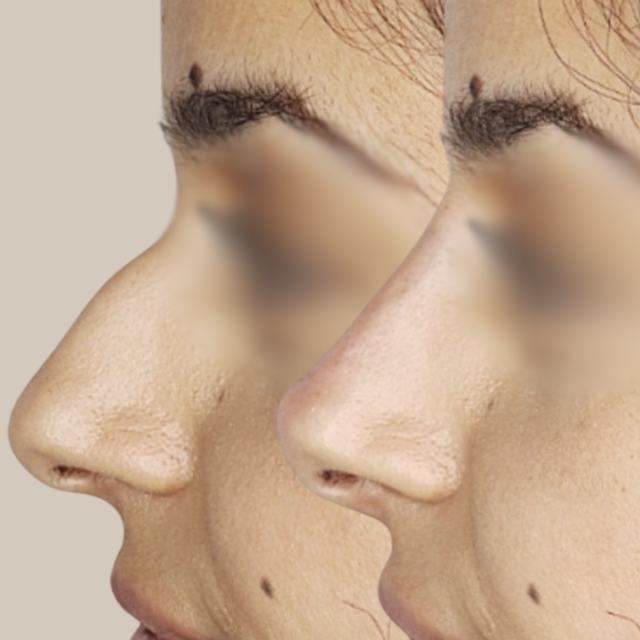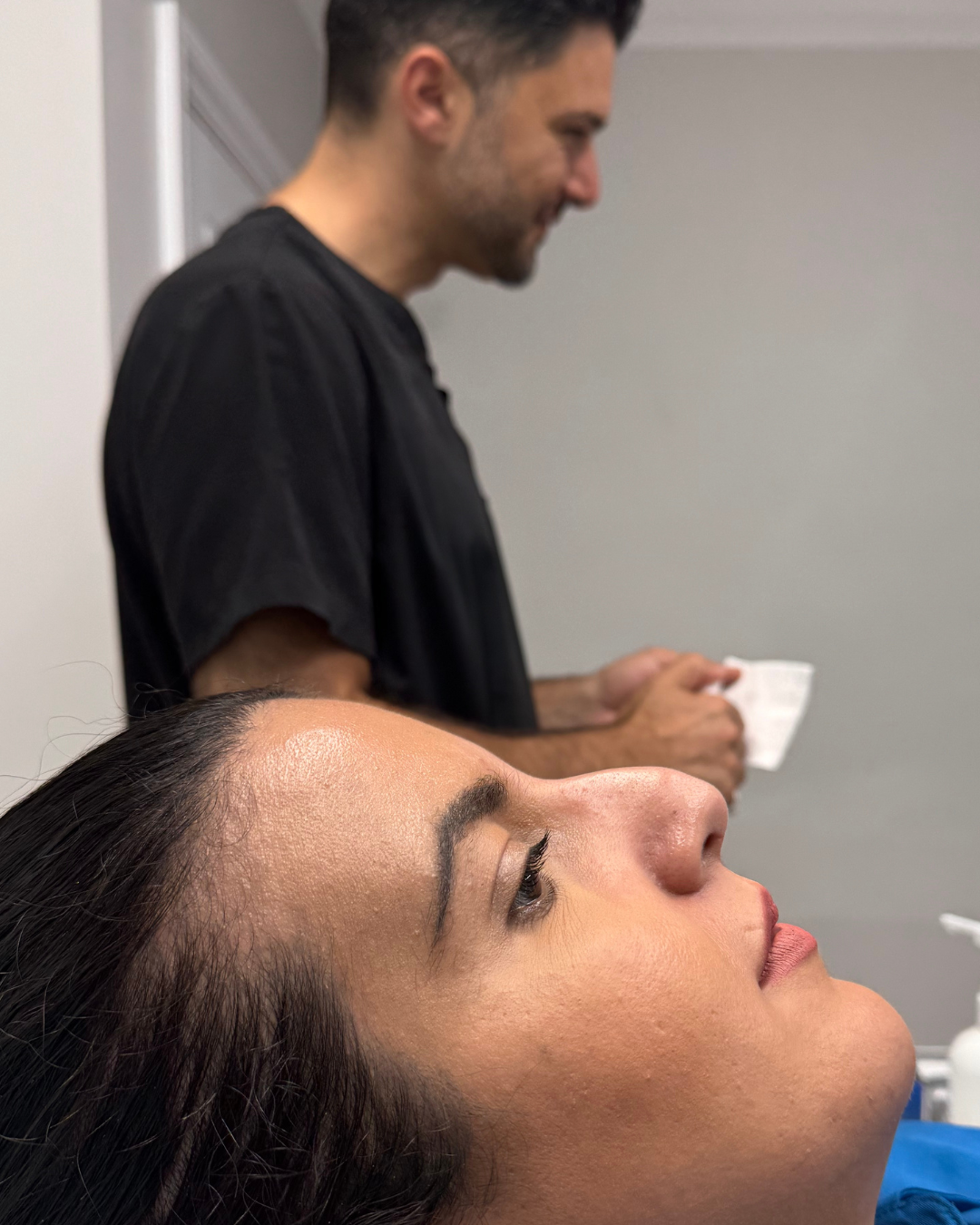
At SRGN, we specialise in non-surgical rhinoplasty for hump reduction that is designed to refine your nose’s profile, enhancing your natural beauty with precision and care.

A nasal hump is an irregularity on the bridge of the nose, creating a noticeable bump that can be seen from the side. This can be due to excessive bone or cartilage, or a combination of both. While some may embrace their unique nasal shape, others may feel that the hump detracts from their facial symmetry and wish to have it corrected.
At SRGN, our hump reduction treatments are meticulously tailored to each individual, ensuring a natural and balanced result that harmonises with the rest of your facial features. Dr Ayad Harb, a world-renowned plastic surgeon, brings his expertise and artistry to every procedure, ensuring that your nose not only looks better but also feels like a natural extension of your unique beauty.

A prominent hump on the nose can be a significant source of self-consciousness for many individuals, affecting the overall harmony and balance of the face. Whether due to genetics or injury, a dorsal hump can disrupt the smooth contour of your nose, drawing attention away from your other features.
Many nasal humps are a mix of bone and cartilage. For these cases, surgical rhinoplasty is often the most effective treatment, allowing for precise reshaping of the nose’s structure to create a smoother, more refined profile.
A hump composed mainly of cartilage can often be addressed with non-surgical rhinoplasty using dermal fillers. This minimally invasive treatment smooths out the nasal profile, providing immediate results with little to no downtime.
Humps that develop as a result of injury or trauma may require more customised treatment approaches. Depending on the severity, options include surgical rhinoplasty or dermal fillers to restore the nose’s appearance and symmetry.
Many nasal humps are a mix of bone and cartilage. For these cases, surgical rhinoplasty is often the most effective treatment, allowing for precise reshaping of the nose’s structure to create a smoother, more refined profile.
A hump composed mainly of cartilage can often be addressed with non-surgical rhinoplasty using dermal fillers. This minimally invasive treatment smooths out the nasal profile, providing immediate results with little to no downtime.
Humps that develop as a result of injury or trauma may require more customised treatment approaches. Depending on the severity, options include surgical rhinoplasty or dermal fillers to restore the nose’s appearance and symmetry.
Surgical rhinoplasty is the gold standard for hump reduction, particularly when the hump is a combination of bone and cartilage. This procedure allows for precise reshaping of the nasal bridge, ensuring a smooth, natural-looking profile that complements your facial features.
Non-Surgical Rhinoplasty is suitable for those seeking a less invasive option, non-surgical rhinoplasty using dermal fillers can effectively smooth out minor humps and irregularities. This treatment offers immediate results with minimal downtime, making it an excellent option for those looking to enhance their nose’s appearance without surgery.